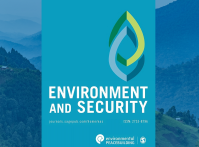-
Al Jazeera Maps Water Flashpoints Around the World
September 19, 2012 By Carolyn LamereHistorically, the concept of “water wars” – inter-state wars fought solely over water – has been fairly unsubstantiated. But continued population growth, accelerating development, and environmental changes are making water more scarce and in turn increasing the chances of related tensions and violence. To illustrate the growing role water plays in tensions around the world, Al Jazeera has put together a map linked to a series of stories they’ve done on water “flashpoints.”
Where’s the Conflict?
Though the map title is “water wars,” the highlighted stories are referred to as “flashpoints” – potential points of future conflict – which is more accurate. They range from protests over privatization in Bolivia and India to unequal distribution in Gaza and Colombia. Some are about issues only tangentially related to water, like the murder of Brazilian environmentalists who fought to protect the rainforest.
Africa, the Middle East, and Central Asia face severe water scarcity. There is simply not enough water to support many ongoing agricultural activities, like cotton farming for example, in these regions. Yemen is predicted by many to be the first modern nation to literally run out of water, in part due to cultivation of qat, a mild narcotic, but also because of high population growth.
In other areas, like the Mekong River basin, it’s not about natural capacity per se, but man-made challenges. As Al Jazeera notes, the concerns in Cambodia and surrounding states are about the impact of dam construction in upstream nations. In Lima, Mexico City, and the Gaza strip, the tap water is too polluted for consumption. And Israel features in three of the five stories on the Middle East, where the disparity of water access between Israelis and Palestinians exacerbates ongoing disputes.
Only a few of the highlighted stories involve transboundary issues, including disputes between Egypt and Ethiopia over the Nile and between India and Pakistan about the Indus and Kashmir. (Editor’s Note: See our coverage of the Nile basin at a turning point here.) The map also mentions the 1989 war between Mauritania and Senegal, although there is no corresponding story.
Nature of Disputes
While the map nicely collects a number of articles about water-related challenges, the naming is unfortunate. Water experts have tried to move the dialogue away from the concept of water wars.
At the National Conference on Science, Policy, and the Environment last year, for example, Carl Bruch of the Environmental Law Institute said that inter-state conflict over water is “highly unlikely.” “It’s a question of governance,” Bruch said. He pointed to the conflict in Darfur in 2003 as an example; the entire Sahel was low on rainfall, but only the region with the least capable government and a host of other challenges experienced conflict.
In other words, water scarcity is not enough to cause conflict on its own. In fact, countries tend to collaborate over water, not fight.
Historical data backs up this claim. Aaron Wolfe and Peter Gleick have noted the rarity of water conflict, and a study by Norwegian researchers Wenche Hauge and Tanja Ellingsen also notes that factors like population density and economic development better predict conflict than scarcity of natural resources.
Despite the rarity of international water conflict to date, however, access to potable water is still an enormous global challenge. Over one billion people lack access to clean drinking water, and increasing consumption and population have already put unprecedented strain on much of the world’s water supplies. Demand will only increase in the coming decades, and Al Jazeera’s map shows that these challenges are not isolated; water is impacting livelihoods and tensions the world over.
Sources: Al Jazeera, Hauge and Ellingsen (1998), Wolf et al. (2003), World Health Organization.
Topics: agriculture, Bolivia, conflict, environment, Eye On, food security, natural resources, security, water, Yemen
 A Publication of the Stimson Center.
A Publication of the Stimson Center.






